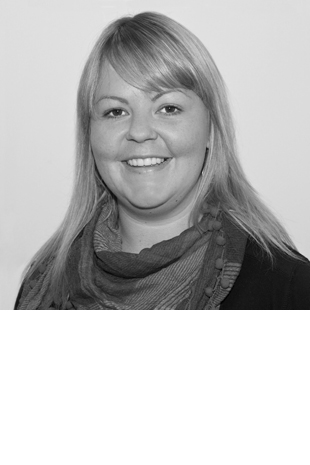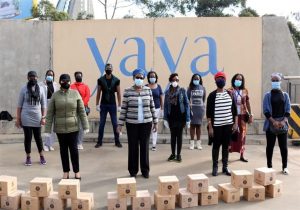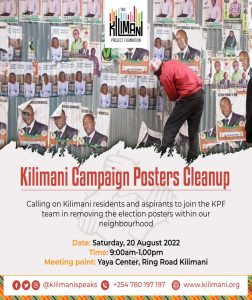Getting it right with corporate philanthropy: Modeling new ways of giving
16 Nov 2022
Around the world, as civic space shrinks and new restrictions around external funding are introduced by governments, community philanthropy organizations are increasingly turning their attention towards the possibilities offered by corporate philanthropy. But beyond simply filling a funding gap, these relationships are equally about engaging new and different actors in building strong communities. In this GFCF partner-led learning session, the Haiti Community Foundation and Kilimani Project Foundation in Kenya shared their experiences of engaging with corporate philanthropy.
The Kilimani Project Foundation was established in 2012 by a group of Kilimanians – residents, artists, urban planners and business owners – who were concerned that Kilimani’s physical environment was changing rapidly, without considering the vision and voice of the community. The foundation is structured as a membership organization and currently counts 600 Kilimani businesses and residents as members. The foundation’s priorities are entirely defined and driven by the membership. Beyond identifying community problems, the foundation supports the community in developing its own solutions to local issues – moving from “from agony to agency” as the Kilimani Project Foundation’s Executive Director, Wanjiru Kanyiha, described it. Incorporating local businesses and business owners in the foundation’s membership is a deliberate strategy to bring these actors into the fold of the organization’s activities, ensuring they are aware of the foundation’s existence and activities. Wanjiru noted that it gives them “a space within the community where they can plug in and contribute to building Kilimani.”
“Building meaningful partnerships based on co-creating solutions to community issues is what takes these relationships to the next level.”
Building meaningful partnerships based on co-creating solutions to community issues is what takes these relationships to the next level. This involves understanding businesses’ ethos and objectives, and trying to find common ground and interests. The foundation has understood over its decade of work that any investment in community development is most successful when areas of mutual concern can be identified by the players involved. Wanjiru offered several examples of such cooperation with local businesses:
- Mawa to Maendeleo Programme: COVID-19 affected the livelihoods of numerous groups in Kilimani, including domestic workers who suddenly found themselves out of work as households shut down in fear of the virus spreading. The foundation quickly mobilized corporate support and, over the first six weeks of the pandemic, purchased food rations and other basic necessities for 200 vulnerable domestic workers and their families with corporate donations. Going beyond immediate support, the programme then involved domestic workers in the production of hand wash and sanitizers – with corporate donors donating the needed supplies and resources – and provided these individuals with a daily wage. The foundation’s existing relationships with corporates allowed for this programme to come together rapidly, in a moment of great community need.
- Kilimani Campaign Posters Clean-Up: During general elections, candidate campaign posters are plastered on walls across Kilimani. This became a growing annoyance for businesses and residents alike, as campaign materials littered their properties. To solve this, five years ago the foundation began organizing an electoral poster clean-up day, bringing together residents and business owners. In addition to contributing their time, local businesses also provide the resources needed to support the clean-up. The clean-up day is now about much more than posters: it is a social cohesion exercise that brings together different groups from across Kilimani who might not otherwise mix. Elected leaders, by law, are also responsible for cleaning up their posters. Many attend these clean-up days, which gives residents and businesses a chance to meet and chat with newly elected officials.
- KiliPreneur Business Advisors: Beyond the provision of financial resources, the foundation also encourages local businesses to give back to Kilimani in different ways. This programme pairs local business owners and entrepreneurs in Kilimani. Business owners provide free advice to the entrepreneurs, particularly around financial literacy, scaling businesses and how to gain access to credit facilities. Wanjiru feels that it has been a particularly important experience for the business owners, as it changes their own perception of their place in the community: “They see themselves as problem solvers in Kilimani, not just coming to reap profits…but as real contributors within the space.”
Wanjiru readily admits that the foundation is still testing the most effective ways to engage with corporate donors. One strategy they are considering for the future is to develop a matching grants programme. Funding from corporate donors would match the amounts of foundation grants, dollar for dollar. With this, the foundation hopes to move away from traditional corporate social responsibility models, and to build more support for the social justice issues that lie at the core of the foundation’s work. But they feel that shifting towards new models of engagement takes time, as strong relationships based on trust and mutual interests must first be established. Though Wanjiru is clear on why community philanthropy organizations are aptly placed to bridge corporate and community interests: “Our strength lies in building networks.”
“…shifting towards new models of engagement takes time, as strong relationships based on trust and mutual interests must first be established.”
The Haiti Community Foundation emerged following the massive 2010 earthquake that hit the country. Its founders believed that traditional economic models and international development strategies had failed Haiti, and that a new way of “doing development” – with respect and dignity, and focused on inclusivity and fairness – must be possible. From the very beginning, the foundation brought together leaders from different sectors – civil society, government, religion, business etc. –to work on the development of a community foundation for Haiti. The result of more than two years of community consultations is that the foundation itself is a multi-stakeholder vision of how a local organization can begin to tackle Haiti’s social, political and environmental issues.
Francois Chavenet, one of the founders of the Haiti Community Foundation and its current Treasurer, spoke about some of the foundation’s early challenges: “In Haiti, we are used to NGOs working in different humanitarian aspects…we had to educate people about wider community development…it was a major challenge because people want their immediate needs to be satisfied.” Focusing initially on the Grand’Anse region, this awareness building exercise also involved the foundation’s relationships with corporates active in the region.
They quickly realized that corporates have certain prejudices towards the sector. One immediate stereotype encountered was that INGOs are the only competent actors, and that smaller grassroots organizations are merely in need of capacity-building. Explaining and illustrating the vision and role of the Haiti Community Foundation – as part of a small but increasingly connected philanthropic network in Haiti – was key in order to initiate relationships with corporate donors. Building up the foundation’s reputation as a trusted actor with national interests at its very core has also allowed it to form relationships with corporate actors outside of the Grand’Anse – for example in Port au Prince where there is a concentration of banking institutions.
The foundation has seen part of its role as making explicit recommendations to donors, corporate and otherwise, about how they can help build a new path for Haiti. Some of these have included:
- Think long-term. Short-term projects don’t build a nation.
- Invest in ecosystems of local actors. Uplift local leaders and let them lead.
- Always put “community first” (in terms of community organizations, community resources, and what is already happening on the ground).
The Haiti Community Foundation has faced the limitations of traditional funding and is keen to see how it can continue to model new ways of working with corporates moving forward. It aims to build corporate engagement around the strengths, rather than the weaknesses, in the communities where it works. One example is encouraging new investments in the Grand’Anse’s agricultural sector. The Grand’Anse has often been called “the bread basket of Haiti” due to the strength of its agricultural sector, though the foundation believes that its full potential is yet to be unleashed. The foundation is actively seeking corporate support from across Haiti to continue building this sector, specifically in terms of new machinery and expertise from corporations. Strengthening local food production would have significant benefits to people across Haiti, and would build livelihoods of agricultural workers in the Grand’Anse itself. In the words of Francois: “What we do is showcase the region’s potential, so that different stakeholders, including businesses, consider getting involved.” By continuing to emphasize the vision of the Haiti Community Foundation – self-sufficiency and long-term development of Haiti by Haitian leaders and their communities – the foundation believes it can attract the right kind of investment to the region, in-line with its values.
“What we do is showcase the region’s potential, so that different stakeholders, including businesses, consider getting involved.”
Key takeaways from the session for community philanthropy practitioners:
- Corporate donors are members of their communities too, either because they are based there or because their staff reside there. When engaging with corporates, plug into this natural interest in the wellness of the locality, and find common interests to collaborate around.
- Corporate donors are often considered as merely sources of income and may be fatigued by regular requests for funding. It is essential to communicate the essence of community philanthropy, and build corporates’ understanding of the various ways they can contribute to a community (beyond money, this involves expertise, skills, in-kind contributions etc.).
- Building corporate giving is too often seen as an “add on” to a strategic plan. Rather, corporate relationships – if an organization is serious about pursuing and sustaining them – should be central when informing and building strategy, and much more than simply a budget filler or after thought.
- Understand your local business community before trying to engage with it. Map who the different players are, what their interests may be, and where there may be common ground for meaningful co-creation of solutions to community needs. Be creative: there is no “one size fits all” approach to corporate engagement.
- Too often, organizations are willing to shift their own priorities in pursuit of corporate funding. Remember who you are: hold your values and vision at the core and do not chase money that doesn’t align with these, or that may compromise your organizational integrity. Don’t dance to the tune of the organization giving money – there is power in saying “no.”
- Corporate giving is often driven by the “feel good element” about giving back, meaning that corporates can tend to invest in short-term charitable projects with clear results and outcomes (ie. “how many meals did we provide?”). By working together in longer-term, structured relationships based on trust, community philanthropy organizations may have a role to play in shifting corporate giving more towards rights and justice issues in a community.
- Find common language: community philanthropy and spaces like “social entrepreneurship” and “social enterprises” can often feel like worlds apart. Move beyond the buzzwords (on both sides) to really understand each other: individual intents, motivations and goals.
About this webinar series
This session is part of the GFCF’s series of partner-led learning events. Past sessions have featured speakers from around the world, and have looked at building local philanthropy, engaging marginalized and minority groups, localism and livelihoods and community participation.



